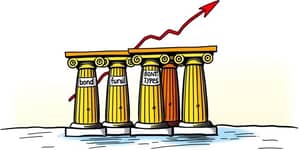As the prospect of retirement comes into sharper focus, the importance of proactive planning cannot be overstated. Whether you’re just starting your career or nearing your final working years, building a clear roadmap today ensures you can embrace tomorrow’s freedom with confidence.
In 2025, Americans face a complex landscape of extended lifespans, shifting policies, and market uncertainties. This guide offers a comprehensive framework to assess your resources, establish realistic goals, and craft a flexible plan that adapts as circumstances evolve.
Assessing Your Financial Starting Point
The first step toward a secure retirement is gaining complete visibility into your financial and legal standing. By inventorying all assets, liabilities, and essential documents, you’ll be equipped to make informed decisions and identify areas for improvement.
- Assets and liabilities balance sheets
- Bank statements, cash holdings, and investments
- Projected major living expenses
- Updated wills, estate plans, and deeds
- Powers of attorney and healthcare directives
- Insurance policies and beneficiary forms
Organizing these details not only reduces stress but also sets a solid foundation for creating accurate retirement projections and personalized strategies.
Calculating How Much You’ll Need
Defining your personal retirement target often revolves around what experts call a “magic number.” Recent surveys show the average American believes they need $1.26 million to retire comfortably in 2025, down from prior years but still a formidable goal.
When calculating this figure, you must factor in inflation, market volatility, and personal lifestyle choices. Keep in mind potential fluctuations in annual expenditures: roughly 60% of retirees report at least 20% spending volatility during their first three years of retirement.
Healthcare costs remain significant, as medical expenses often do not decline as expected during retirement years. Budgeting for these variations can be the difference between long-term stability and financial hardship.
Creating a Flexible, Goal-Oriented Plan
Once you understand your baseline, the next task is building a roadmap that can adapt as circumstances change. A dynamic approach leverages regular reviews and automated triggers to keep you on course.
Begin by outlining clear, time-bound objectives such as debt elimination, savings milestones, or investment reallocations. Then integrate financial action plan with self-correcting mechanisms that activate when performance deviates from expectations.
Expect policy shifts. Social Security benefits could face reductions of up to 20%, while tax laws may evolve dramatically after 2025. Designing a plan with contingency buffers helps you stay on track even when rules shift unexpectedly.
Collaborating with a qualified financial planner can streamline this process, offering personalized insights and accountability to ensure your strategy remains aligned with changing market conditions.
Diversification and Income Strategies
Building multiple income streams reduces reliance on any single source and provides resilience against market swings. A balanced approach blends traditional pensions, Social Security, investment portfolios, annuities, and part-time work.
- Maintain diversified asset allocations across equities, bonds, and alternatives
- Consolidate retirement accounts for clearer oversight
- Explore guaranteed lifetime income products to hedge against sequence of returns risk
- Consider part-time or freelance work to bridge income gaps and maintain purpose
By avoiding narrow bets and remaining invested through market cycles, you capitalize on compounding growth and cushion against timing risks that can erode portfolios during downturns.
Tax-Efficient Retirement Planning for 2025 and Beyond
Tax policy is poised for significant change. With key provisions of the Tax Cuts and Jobs Act set to expire at the end of 2025, retirees must anticipate potential rate hikes and increased levies on retirement distributions.
Effective tax strategies can enhance your after-tax retirement income. Consider Roth conversions and tax-loss harvesting to shift assets into more favorable tax brackets over time.
- Maximize contributions to tax-deferred accounts before year-end
- Use systematic Roth conversions to spread tax liability
- Harvest capital losses in taxable accounts to offset gains
- Strategically time large withdrawals to avoid high-bracket years
Fine-tuning your withdrawal sequence ensures you minimize the drag of taxes, increasing the longevity of your nest egg.
Legacy and Estate Planning
Securing your legacy goes hand in hand with retirement readiness. Untangling your estate can be one of the greatest gifts you leave to loved ones and causes you care about.
Review and update all beneficiary designations, trusts, and wills. Align these documents with your long-term intentions, whether supporting heirs or funding philanthropic objectives.
In light of possible future tax law changes, planning for charitable giving can reduce estate tax burdens while supporting meaningful causes. A clear, transparent plan avoids probate delays and unexpected tax surprises for your beneficiaries.
Psychological and Lifestyle Considerations
Retirement is not just a financial milestone; it represents a profound life transition. Addressing non-financial factors often separates thriving retirees from those who struggle to find purpose and connection.
Consider your ideal living environment, whether downsizing, relocating, or adapting your current home for aging in place. Evaluate healthcare coverage options, including long-term care insurance, to manage unforeseen medical costs.
Maintaining social connections and community involvement fosters mental and emotional well-being. Many retirees discover fulfillment through mentoring, volunteering, or part-time work that aligns with lifelong passions.
Remember that for some, one in 12 say they'll never retire fully, choosing instead to blend work and leisure in ways that sustain both income and purpose.
Challenges and Emerging Issues
Despite record-high savings rates—14.3% average 401(k) contributions in early 2025—many Americans face a retirement readiness gap. Nearly 67% of those aged 50 to 74 lack a formal plan, and rising lifespans exacerbate funding shortfalls.
40% of older Americans delay retirement because of inflationary pressures that erode purchasing power. Sustaining momentum toward your goals may require increasing savings rates or adjusting your retirement timeline.
Policy risks, including potential Social Security cuts and tax law reversals, underscore the need for a flexible approach. Staying informed and adaptable can transform uncertainty into opportunity.
Conclusion
Preparing for retirement in 2025 and beyond requires a holistic approach that blends disciplined savings, thoughtful planning, and resilience to change. By assessing your current standing, defining a realistic “magic number,” diversifying income sources, and optimizing taxes, you lay the foundation for a secure and fulfilling golden age.
Equally important are legacy considerations and the emotional dimensions of retirement life. Crafting a plan that reflects your values and ambitions ensures that your golden years shine with purpose, freedom, and peace of mind.
References
- https://newsroom.fidelity.com/pressreleases/fidelity--q1-2025-retirement-analysis--retirement-savings-rates-reach-record-high-while-average-acco/s/0021ad2c-636b-4077-a2e2-6b26d9d022d4
- https://www.wealthenhancement.com/blog/financial-action-plan
- https://news.northwesternmutual.com/2025-04-14-Americans-Believe-They-Will-Need-1-26-Million-to-Retire-Comfortably-According-to-Northwestern-Mutual-2025-Planning-Progress-Study
- https://am.jpmorgan.com/us/en/asset-management/adv/insights/retirement-insights/five-retirement-planning-tips-2025/
- https://www.harborlifesettlements.com/retirement-statistics/
- https://www.cfp.net/news/2025/03/2025-tax-changes-could-upend-retirement-and-legacy-plans
- https://www.ici.org/statistical-report/ret_25_q1
- https://www.theamericancollege.edu/knowledge-hub/insights/retirement-planning-strategies-for-a-changing-landscape










